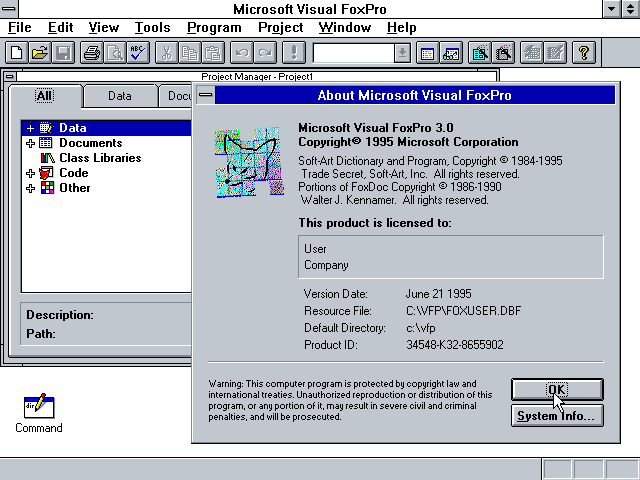


'Procedure with error: ' + tcProcWithError + CHR(13) + 'Error number: ' + TRANSFORM(tnVFPErrorNumber) + CHR(13) + STORE 'Error message: ' + tcVFPErrorMessage + CHR(13) + LPARAMETERS tnVFPErrorNumber, tcVFPErrorMessage, tcProcWithError, tnLineNumber ON ERROR DO errorHandler WITH ERROR(), MESSAGE(), PROGRAM(), LINENO()Ī simple errorHandler method may look like the following. The values returned by ERROR (the VFP Error Number), MESSAGE (the VFP Error Message), PROGRAM (name of the currently executing program) and LINENO (the line number of the error) are passed to the errorHandler method. The following ON ERROR command calls a method in the current program called "errorHandler".

VersionsĪ simple way to catch unhandled errors (exceptions) in a VFP application is to use the ON ERROR command near the beginning of your main program. If what you need is to create a data based application for windows desktop then choosing VFP you would really do that easily and fast. Microsoft® Visual FoxPro® database development system is a powerful tool for quickly creating high-performance desktop, rich client, distributed client, client/server, and Web database applications.Īlthough it is an old language, it is still considered to be the easiest language for creating a data centric application rapidly for the windows desktop. Microsoft's official Visual Foxpro (commonly referred as just VFP) site describes it as: It was also the first version of Foxpro where the language turned out to be Object Oriented.

At the end of 1995, Foxpro got the name "Visual" and the platform support was only limited to windows. After Microsoft's taking over, in 1994 Foxpro for DOS (FPD) and Foxpro for Windows (FPW) 2.6 released. Later on 1992, unfortunately, it was acquired by Microsoft. It was known as the fastest database engine on PCs then. Foxpro was created in early 80's (originally as FoxBase - 1984?) by Fox software and supported on Mac OS, Unix, DOS, Windows platforms.


 0 kommentar(er)
0 kommentar(er)
